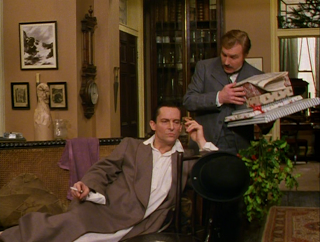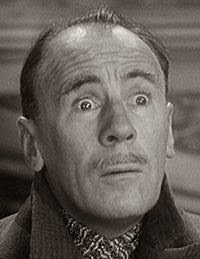And although they to have become a little romanticized in the Canon of Sherlock Holmes, they actually represent one of the more grittier sides of Watson's story telling.
Poor, dirty, unkempt, probably seldom well fed and, again, probably for the most part homeless.
They probably did not have much of a future ahead of them, with petty crime and lowly employment the only path that lie in their future. Not without energy, they would do anything they could to increase their collection of pence; holding horses, running errands, helping with loads of goods or baggage. (source).
Some may have gone off to wars, to return better formed men. Some may have died in those same wars.
None are mentioned as women, although that could well have been the case. And if women, their lot in life was probably less pleasant to think about than that of the boys.
Most of them probably spent the biggest part of their lives within a few small blocks.
Again, probably most of us romanticised about Holmes' influence on them, even going so far as to hope Holmes was their way out of their sad lot. (Who does not hope Holmes or Watson sent Wiggins off to school somewhere?)
Must of us accept Wiggins as the leader of the Irregulars.
Many of us probably assume Billy the page ascended from those ranks and found cleaner employment and perhaps a life long career beyond the streets.
But truth be told, we don't really know much about the individuals or what ever became of them. London streets were dirty and harsh, with little future. And although we may fantasize about the London of Holmes era, it was for most a very hard time and a hard place to live in.
Visually, for me, one of the best representations of the above image is the Irregulars is as they appear in the film "Without a Clue". Although played in large part for laughs, I think the habits and dress come pretty close to accurate.
Jump forward some hundred plus years to the modern incarnations of Holmes, "Sherlock" and 'Elementary", and we find a different set of Irregulars, if we can even call them that at all.
In the Canonical Irregulars we see a gang or group of boys. Assuming for the most part that the individuals are the same in each story. And as with most gangs, new individuals would come and go for one reason or another with a central repeating core.
While we have a substantial image of the Canonical Irregulars, one has yet to form within the two television shows mentioned above.
When doing a google search for the Baker Street Irregulars you first get a description of the Canonical Irregulars, followed then by the incarnations that developed from the original.
When searching for minor characters within the Canon Wiggins shows up as an Irregular.
As of yet, no minor characters have been described as such, in my observations, within "Sherlock" or "Elementary". (James or Buddy2blogger, I am counting on you guys to correct me if I am wrong.)
Individuals have stood out in individual episodes as resources that Holmes uses at times to find needed information, but to my knowledge, none have been children, and if they have been none have been part of a group or gang.
Most have been more along the line of Langdale Pike or past clients with a skill set usable to Holmes, which is very Canonical in nature, but not the same as the Irregulars.
So, with all this above space wasted so far, can the Irregulars be relevant to a modern Holmes, and what would they be like.
In this day and age, in a modern society, I don't believe wayward children would have access to things the way they did in Canonical Holmes' era. The streets are not filled out the same way with a mass of people all suffering the same lot. Unkempt youths would not be accepted in most of the places the stories in the modern era take place. They could not move around unnoticed, nor is information gathered in the same way. (Unless all the stories took place in a Walmart or something.) Hygiene and attire that was acceptable in Victorian times would no longer go unnoticed.
If most of cases involving "Sherlock" or :"Elementary" took place in slum districts run by gangs, the scenario of child Irregulars mixing with the masses would seem possible.
But with most stories taking place in more high-tech or suburban areas, the likelihood of child Irregulars as repeating characters seems unlikely, especially if seen as a group.
Again, can a group of children in a modern take on the Canon be convincing as a group called "Irregulars" and if so, what would they be like?
Could they indeed be children?
They would have to be street smart.
They would have to be somewhat tech savvy.
They would have to be mobile.
They would have to be able to gain access to more upscale types of places.
Would the gang be led by someone more like 'Q' in the modern newer Bond movies?
Women would have to be part of the new "Irregulars".
They probably would require more funding.
Martial art skills may be required. (Teen-age-Ninja Irregulars?)
If we assume that even most high tech or high-society crimes have their germination in seedier parts of towns, we could see child Irregulars as a possibility. But I don't know if that is the case or not.
Or, in this day and age, are the new "Irregulars" more likely to be gadgets?
Is the IPHONE (or like device) the new "Irregulars", with "google' being the new Wiggins, and all the hackers out there being the rest gang.
Or would "Sherlock" or "Elementary" now use the term "Irregulars" not as a group or gang as such, but a mental collective of individuals, some tech savvy and some street smart, all unknown to each other, with the term "Irregulars" only a personal description of his network?
Are "Irregulars" irrelevant in the modern era of Holmes? What do you think?


.jpg)

.jpg)




.jpg)

_01.jpg)






.jpg)

.jpg)


.jpg)


.jpg)



.jpg)
.jpg)















.jpg)




